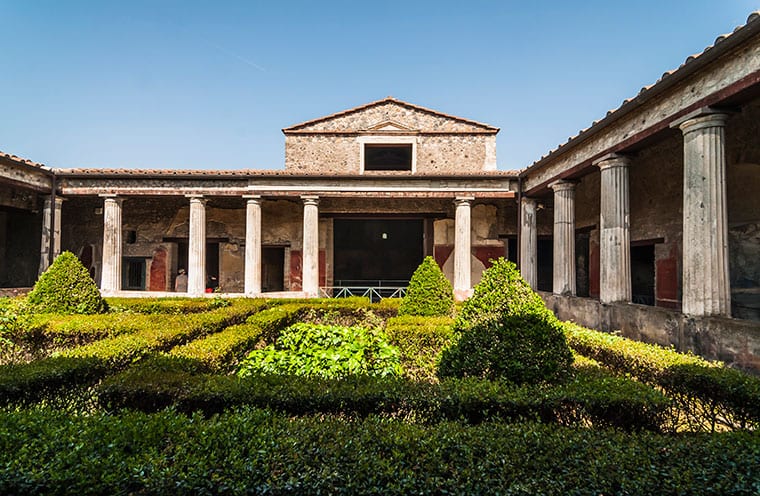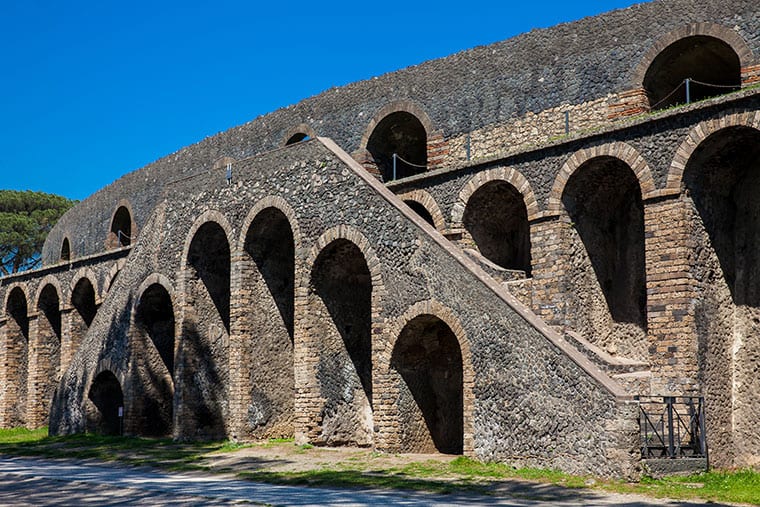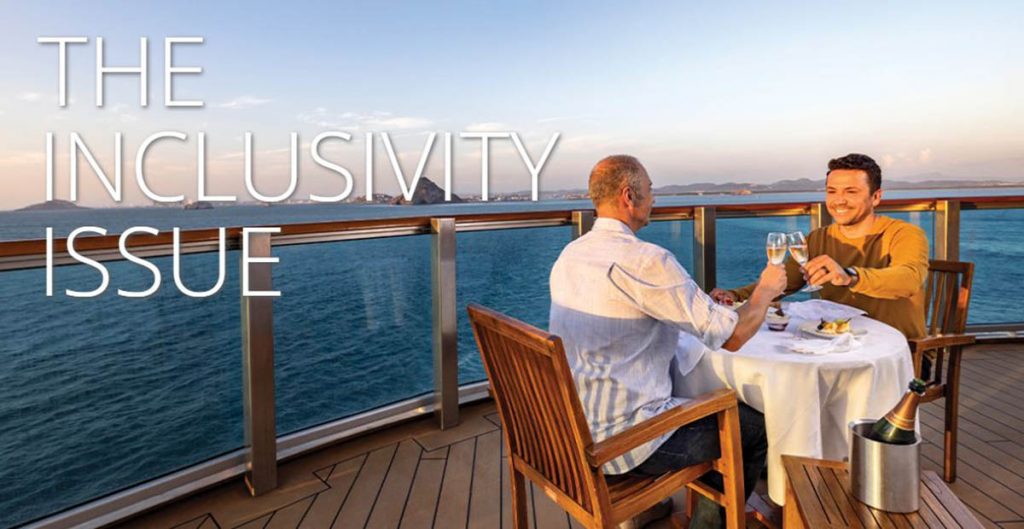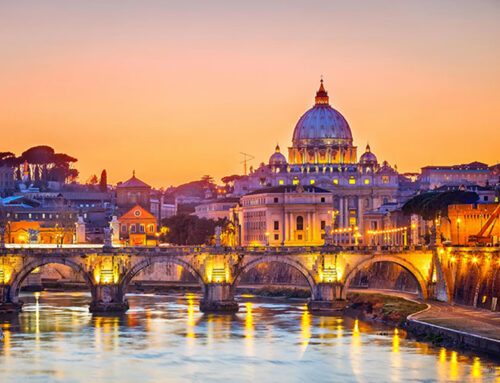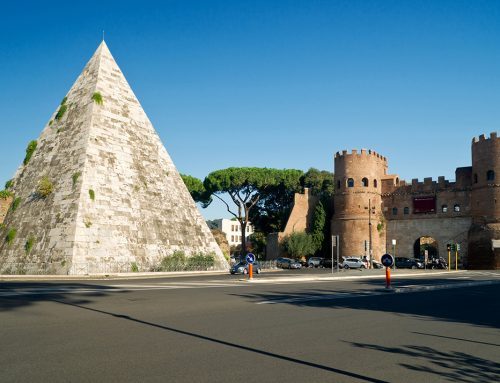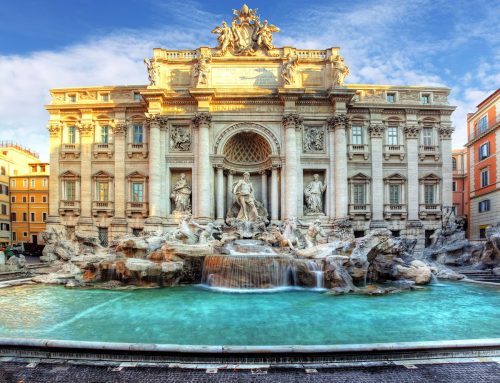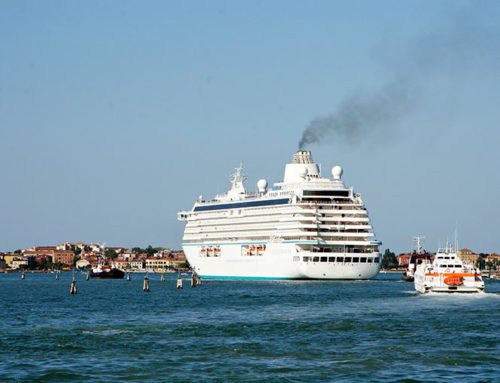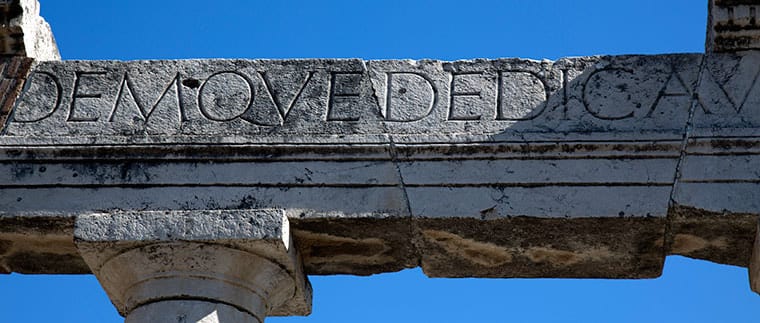
During an Azamara Cruise we had a port stop in Sorrento, Italy, and while Sorrento is a charming old city perched on cliffs overlooking the Mediterranean, we wanted to visit the once thriving ancient city of Pompeii. As you’ll soon learn, it is a visit that everyone should take.
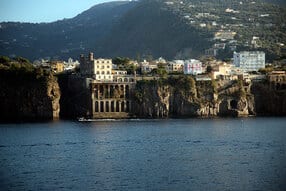
Steep cliffs in Sorrento, Italy
I should note that the drive from Sorrento to Pompeii is not for the faint of heart. The road hugs the mountain cliffs with steep vertical drops.
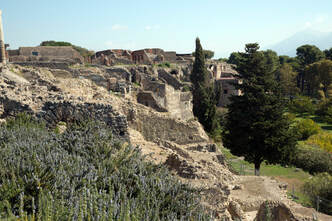 Entrance to Pompeii
Entrance to Pompeii
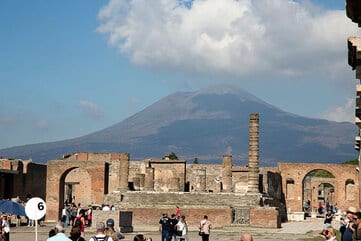 Pompeii with Mount Vesuvius only 5 miles awayAs you enter the city it becomes clear that Pompeii was once a wealthy and vibrant port city. Settled around 74 BC by the Greeks. It was used by Greek and Phoenician sailors as a safe harbor. Once It was incorporated into the Roman empire, it became important passage route to supply goods to Rome. At the time it was destroyed by Vesuvius it had grown to a population of 12,500 – 15,000 inhabitants.
Pompeii with Mount Vesuvius only 5 miles awayAs you enter the city it becomes clear that Pompeii was once a wealthy and vibrant port city. Settled around 74 BC by the Greeks. It was used by Greek and Phoenician sailors as a safe harbor. Once It was incorporated into the Roman empire, it became important passage route to supply goods to Rome. At the time it was destroyed by Vesuvius it had grown to a population of 12,500 – 15,000 inhabitants.
Over the decades that followed the eruption, the city of Pompeii was forgotten. There were several limited excavations in the area in the 1700s and 1800s. It took until the 1950s for the full size and scale of Pompeii to be uncovered.
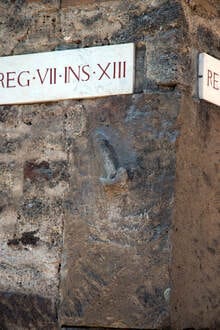 Original street signs in Pompeii
Original street signs in Pompeii
Located about five miles from Mt. Vesuvius, the city bloomed into a sophisticated trading post with elegant houses, amphitheaters, cafes, taverns, brothels, public bathhouses and a large an open-air Forum for shopkeepers and artisan and public gatherings.
The original street signs look as if there were recently created. Original graffiti abounds throughout the city calling out certain citizens or pushing political agendas – I guess we have not changed that much over time.
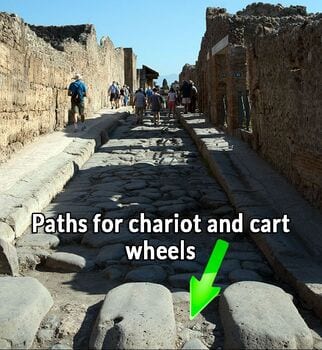
We entered the city near the Stabia gate to an area behind the grand and small theatres. As we walked up a stone road with paths cut for Roman chariots and shopkeeper carts we passed rows of small homes tightly packed together.
Along this road were several small shops and cafes which served their version of fast food. You can still see the pots and counters used to serve hungry patrons. Their tools of the trade, plates, bowls, cups and cooking utensils can still be found in these buildings.
There were 26 public drinking fountains throughout the city. We were surprised to learn that Pompeii had running water and used lead pipes to deliver it from aqueducts to the baths and fountains throughout the city.
The lead pipes were lined with chalky deposits that minimized the effects of lead. But the water was contaminated with antimony which was added to the lead to make the pipes stronger. Antimony is much more toxic than lead. These original pipes can still be seen in the city today.
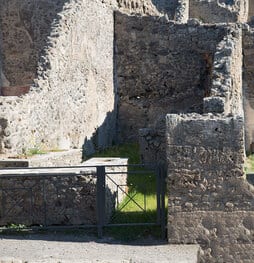 Bakery inside of a home
Bakery inside of a home
Merchants tended to work in their tightly packed modest homes which were built around their workshops. While cafe owners would build counters and ovens in the front of their homes to serve people walking on the streets.
Some citizens owned small plots of fertile land outside of town and would sell their crops from their home storefront.
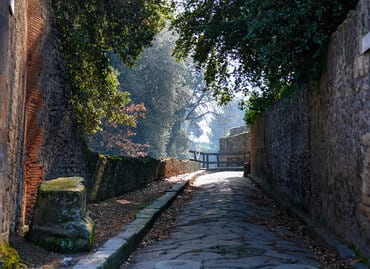 Pompeii had beautiful tree lined streets and gardens
Pompeii had beautiful tree lined streets and gardens
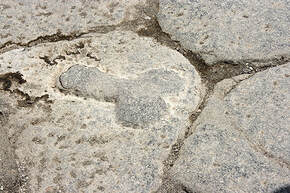
Sign pointing to a brothel
The amphitheatre was built 70 BC and is the earliest known amphitheatre to be build of stone (the Colosseum in Rome was built over a century later). It was used for gladiator fights. (Amphitheatre means double theatre or a circular theatre.) It has been estimated that it could hold between 12,000 – 20,000 spectators. After a huge and deadly fight between Pompeiians and residents of Nuceria during a game, Rome ordered a 10-year ban on those contests.
As a wealthy community which attracted wealthy visitors from Rome and other cities, Pompeii had a thriving theatre. The small theatre could hold around 1,000 spectators and was designed in a Greek style with seating area deeply embanked. It was permanently covered. Performances would include plays, musical events, as well as mime performances which were typically comedy or of a bawdy nature.
The large theatre could hold up to 5,000 and could be covered during performances.
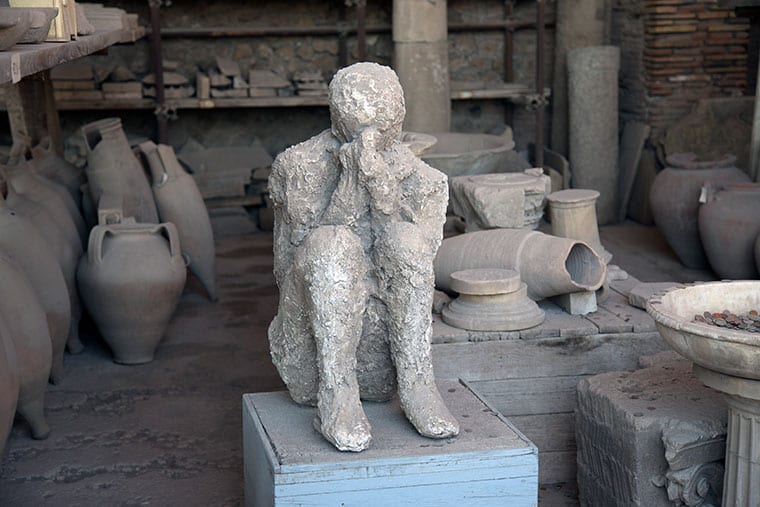
Of course a visit to Pompeii isn’t complete without viewing the horrific casts of those who did not escape the eruption. Their plaster casts show the horror and suffering in their final moments of their life. Roughly 2,000 inhabitants perished this way, along with their pets and animals.
The volcanic ash and pumice settle around their bodies forming a lasting final impression within the surrounding ash. As their clothing and bodies decayed over the years, all that was left was their bones and the void inside the cast that was their body. Researchers discovered they could fill the voids with plaster and create realistic replicas of the bodies. Most of the bodies are assumed to be servants who were forced to stay in the residences by their masters.
You can easily spend a full day exploring this incredible city. We took a shore excursion and only had about two hours in the city. We both agreed that next time, we’d arrange our own visit and spend much more time. You can take an audio self-guided tour which allows you to take your time at each site.
If it isn’t already on your bucket list, be sure to add it – you won’t be disappointed.
So how to choose the right vacation for you?
Vacations are an investment! With literally thousands of options, choosing the right vacation and the best value is difficult to sort through. That’s where I bring my 12 years of travel experience and expertise to do this right, and get you the best value for your money. With the backing of the largest travel consortium behind me, we have options you can’t find online. Plus our work just gets started once we book your dream vacation. Chat with us to learn more.
The world awaits you and we look forward to assisting you in choosing the exact right adventure on the waters or land for you and your companions!

